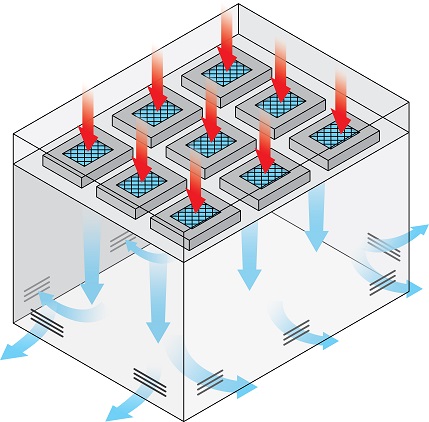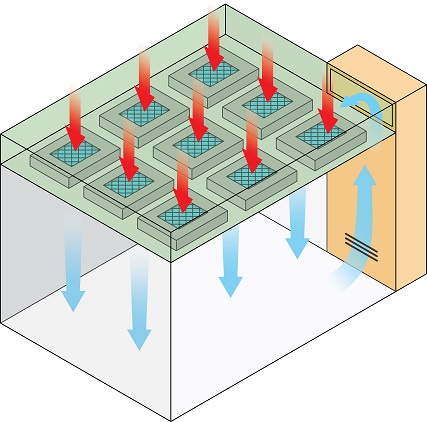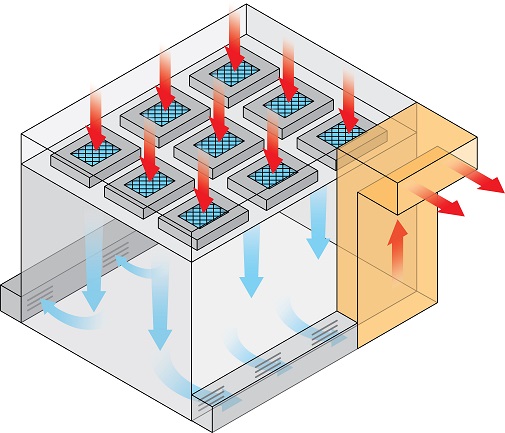Modular Cleanroom Construction
Have the terms “Hardwall” and “Softwall” come up while you were looking for modular cleanroom choices for your company? How do these two kinds of cleanrooms differ from one another? What kind of cleanroom building is best for your needs, and how can you tell? Let’s investigate the issue further and provide you with more information!
Hardwall Cleanrooms
Are you needing a cleanroom solution that provides comprehensive environmental control, maximum modifiability, and utilizes existing HVAC systems? Look no further than Hardwall cleanrooms! These cleanrooms are perfect for typical cleanroom applications and large-scale projects that require strict environmental control.
One of the significant advantages of Hardwall cleanrooms is their ability to utilize the building’s existing HVAC system while meeting all cleanroom regulations. This feature saves you money and ensures that your cleanroom operates at peak performance.
Hardwall cleanrooms can be constructed over an installation kit already attached to the floor or ceiling, making them easy to assemble and install. They also offer comprehensive environmental control over your cleanroom, from temperature and static to particle decontamination, allowing you to meet even ISO Class 1 criteria.
Moreover, Hardwall cleanrooms are highly adaptable and easily expanded or updated to meet evolving cleanroom requirements. Their durable frame and ceiling grid makes them ideal for large cleanrooms and typical cleanroom applications that require strict environmental control.
So if you’re looking for a cleanroom solution that offers maximum modifiability, comprehensive environmental control, and utilizes existing HVAC systems, Hardwall cleanrooms are the way to go. They provide the flexibility and reliability to quickly meet your cleanroom requirements.
Softwall Cleanrooms
Are you looking for a cleanroom solution that is cost-effective, highly adaptable, and easy to set up? Look no further than Softwall cleanrooms! Constructed with flexible materials that resemble a tent, these cleanrooms can be freestanding or suspended from an existing structure, making them versatile and portable.
One of the most significant advantages of Softwall cleanrooms is their affordability. Their simple design requires minimal materials, making them cost-effective for any budget. Plus, Softwall cleanrooms are highly customizable, allowing you to tailor them to your needs with the necessary HEPA or ULPA filters or door types.
Not only are Softwall cleanrooms affordable and flexible, but they’re also effortless to set up. With minimal equipment and a few hours of your time, you can have a Softwall cleanroom up and running in no time. And because they’re typically compact, Softwall cleanrooms can fit into almost any space, making them ideal for temporary cleanrooms or applications with less stringent classifications, like storage.
So if you’re looking for a cleanroom solution that is affordable, adaptable, and easy to set up, consider Softwall cleanrooms. They offer the versatility and portability you need to quickly meet your cleanroom requirements.
Types of Air Flow Systems in a Cleanroom
Single-pass Cleanroom
In a clean room with a single pass air flow design, HEPA-filtered air is delivered into the room via fan filtration units (FFUs) from ambient air above the cleanroom ceiling. The atmosphere is expelled via low-wall air grids after passing through the room . This form of architecture does not need individual air handling units or ducts. A slight heating/cooling unit can be ducted to single pass cleanroom to keep operators comfortable with warmer or cooler air throughout the summer and winter months.

Recirculating Cleanroom
There are two ways to design such a closed loop system.
- The air is recirculated using a dedicated air handling system and ducts. Therefore, the system is coupled with terminal HEPA units installed on the cleanroom ceiling. On the other hand, the air is continuously filtered and circulated. Recirculating systems provide better control of temperature and humidity with higher precision and efficiency.
- An additional option for recirculating cleanroom architecture is a ceiling air plenum. The plenum is a gap between two ceilings where the air is circulated via recirculation and conditioning (with an air handler unit). The fan filters are then filtered into the cleanroom (FFUs). The atmosphere is cycled in the room by low wall air chases and returned to the plenum, once again routed through the FFUs. This can be a possible if the cleanroom ceiling is supported by a steel structure constructed for this purpose.

Negative Pressure Cleanroom
In a negative air pressure cleanroom, the air pressure in the cleanroom is lower than the pressure outside of the room to avoid any contamination escaping from the cleanroom.
usually air enters to the room through wall filters near the floor, and then is directed out through filters in the room ceiling where the fan filters (FFUs) are located.
Negative air pressure cleanrooms are used in pharmaceutical compounding of hazardous drugs, biochemical testing, and also in hospitals to quarantine patients with contagious disease.

Ezad Cleanroom is a division of Ezad Lab Furnishing Inc. Reliable USA-based laboratory manufacture providing laboratories with high-quality equipment since 2000 at affordable prices.
